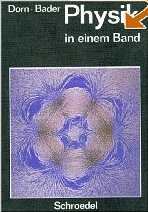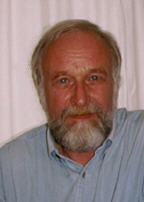The first volume of ?Ether Physics and Philosophy? had three parts:
- 'Introduction' defined special terms and reasons why here ether is called that Single-One as really one gapless basic substance.
- 'Universal Movement' described nature of basic movements by which ether of whole universe might swing.
- Local Movements' showed basic pattern of appearances, according to possibilities and necessities of that ether understanding.
The second volume now starts with the fourth part ?Inclusions / Exclusions? at which is shown, already an appearance physically exits as gapless matter - plasma - so ether well can be assumed as real continuum analogue to aggregate status of plasma.
Meanwhile discussions showed, many readers can not imagine how any motions could come up within that solid matter of ether. Many other ether-theories avoid that problem as they do not define basic characteristics of their understanding of ether or do not talk about numerous prerequisites for assumed functions of ether.
At this fourth part also is reported about ?The Principle of Existence? by Harald Maurer, who most exactly names prerequisites of his basic T.A.O. (the absolute organization), practically ?granules? of most small units. These units require space so affecting mutual ?All-Pressure?. Vortices systems at T.A.O. represent physical appearances and also these affect mutual pressures. Based at this simple principle of existence, Maurer explains most astonishing many occurrences of physics and also biology. I agree with many of his sights, so I refer to his works and can concentrate at points of view I have different or opposite understanding.
This second volume also has fifth part ?Particle Movement?, at which I actually wanted to show only some examples, how particles of gases or liquids in principle move respective has to move - so later I could easier explain, why movements of gapless ether must show quit other nature resp. why ether can not exist of particles at all. However that section of chapters got self-running and much voluminous because surprisingly came up quite new insights of most far reaching importance.
Major law of physics is constant of energy, which most obvious appears at mechanics. Opposite to solid bodies however, particles of fluids can move free into any directions. That chaotic molecular movements result static pressure. Fluid particles fly all times into direction of relative void and by that ?suction? flows come up. Flows affect dynamic pressure and same time correspondingly reduced static pressure. Basic law of energy-constant thus appears at fluids as law of constant dynamic plus static pressures.
At fluids, likely absolute valid are experience-statements of thermodynamics, where inevitable heat losses of all processes are deduced, i.e. technical systems can show efficiency only less than hundred percents. Present days techniques by majority are based on combustion technologies, i.e. application of heat and pressure, with just minimum efficiency in total.
Opposite at fluids, trigger for generating flows by suction demands minimum energy input, because chaotic movements only become little bit better ordered, i.e. kinetic energy latent existing within fluids now become usable ?external?. So there is no real input of energy necessary to produce flow of increased dynamic pressure on account of reduced static pressure. Condition is only to organize relative void (like continuously done e.g. by wings), however already each faster flow affects ?sucking? towards neighbouring areas (like e.g. any whirlwind demonstrates enormous potential of molecular movements of air particles).
At applications of suction speed of molecular movements are reduced by parts, so particles demand less space and continuously thus new particles will fall into that part-vacuum. When producing cold thus quite new interpretation of thermodynamics comes up, resulting possibilities for increased efficiency resp. offering surplus-benefits by essentially reduced efforts.
Based on many examples and applications I developed that sight, at first also supported by calculations partly most ?strange?, while formula and calculations of last few chapters are deduced and applied most significant. So probably is recommended first to study summary quite at end of book, in order to follow thread of ideas and considerations and result most easy.
Naturally I will go on publishing new chapters at my website and later to document again by volume 3, then however only concerning subject of ether - and probably with results likely ?strange? and most interesting.



